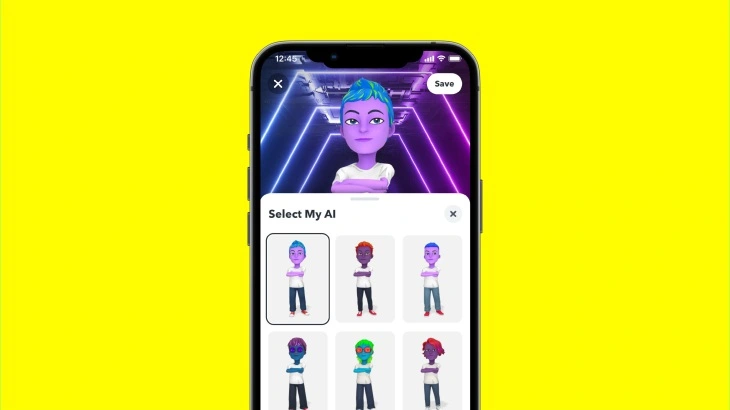Snapchat’s new “My AI” feature, a chatbot powered by OpenAI’s GPT technology, has recently experienced a significant surge in negative user feedback. The feature, which was introduced as a global offering after being exclusively available to subscribers, has led to an increase in one-star ratings for the app.
App Store Reviews Highlight Dissatisfaction
The discontent with Snapchat’s “My AI” feature is evident from the app’s recent U.S. App Store reviews. According to Sensor Tower, the average rating over the past week was 1.67, with 75% of reviews being one-star. In contrast, the app’s average U.S. App Store review across Q1 2023 was 3.05, with only 35% of reviews being one-star. The number of daily reviews has also increased by five times over the last week.
Users Criticize Forced Integration and Invasiveness
Many users are unhappy with the “My AI” feature’s placement within the app, as it is pinned to the top of the Chat feed and cannot be removed or blocked. This space is typically reserved for interactions with friends, and users are upset that they did not consent to the feature’s addition.
The AI chatbot’s knowledge of users’ location information, even when not shared on Snap Map, has also led to criticism. As a result, the feature is perceived as invasive and unsettling.
Concerns Over AI Chatbot’s Responses and Data Collection
Before its public rollout, Snapchat’s “My AI” feature was scrutinized for providing unsafe and inappropriate responses to underage users. Although the company implemented age filters to maintain age-appropriate content, parental controls were not available at the time of the feature’s launch.
The chatbot’s data collection and utilization have also sparked a broader debate about AI and personal information. Users are becoming increasingly aware that their data and online activity contribute to the development of AI systems, raising questions about consent and privacy.
Addressing User Concerns and the Future of “My AI”
Despite the overwhelming negative feedback, a small number of users have expressed support for the “My AI” feature. Snapchat has not committed to removing the feature but emphasizes that users are not obligated to use it. The company is continuously iterating on its features based on community feedback and working to address user concerns.
The Impact of Negative Feedback on Snapchat’s Image
The widespread dissatisfaction with the “My AI” feature has the potential to tarnish Snapchat’s reputation among its user base. Many users are threatening to delete the app entirely or switch to alternative platforms, which could lead to a decline in Snapchat’s active users and ultimately affect its revenue.
The Role of User Feedback in Shaping Future Features
Snapchat’s experience with the “My AI” feature highlights the importance of incorporating user feedback and preferences when developing and launching new features. Ensuring that users have the option to opt-in or opt-out of new features can help maintain a positive user experience and mitigate potential backlash. Additionally, being transparent about data collection practices and privacy settings is crucial for building trust and maintaining user loyalty.
Lessons for Other Companies Integrating AI Technology
Snapchat’s “My AI” feature serves as a cautionary tale for other companies looking to integrate AI technology into their products and services. Ensuring that users are informed about and able to control AI features is crucial for maintaining trust and satisfaction. Furthermore, companies must be diligent in monitoring AI-generated content to prevent the spread of harmful or inappropriate material.
The Future of AI in Social Media Applications
Despite the challenges Snapchat has faced with the “My AI” feature, AI technology will likely continue to play a significant role in the evolution of social media applications. As AI capabilities advance, it is essential for companies to prioritize user privacy, safety, and control over the AI experience. By addressing these concerns proactively, social media platforms can unlock the potential of AI technology to enhance user experiences and drive innovation.
Conclusion
Snapchat’s recent struggle with the “My AI” feature serves as a valuable lesson for companies looking to incorporate AI technology into their products. The key to successful AI integration lies in balancing innovation with user control, privacy, and safety. By addressing these concerns and incorporating user feedback, companies can develop AI-driven features that enrich user experiences and contribute to the growth of their platforms.
